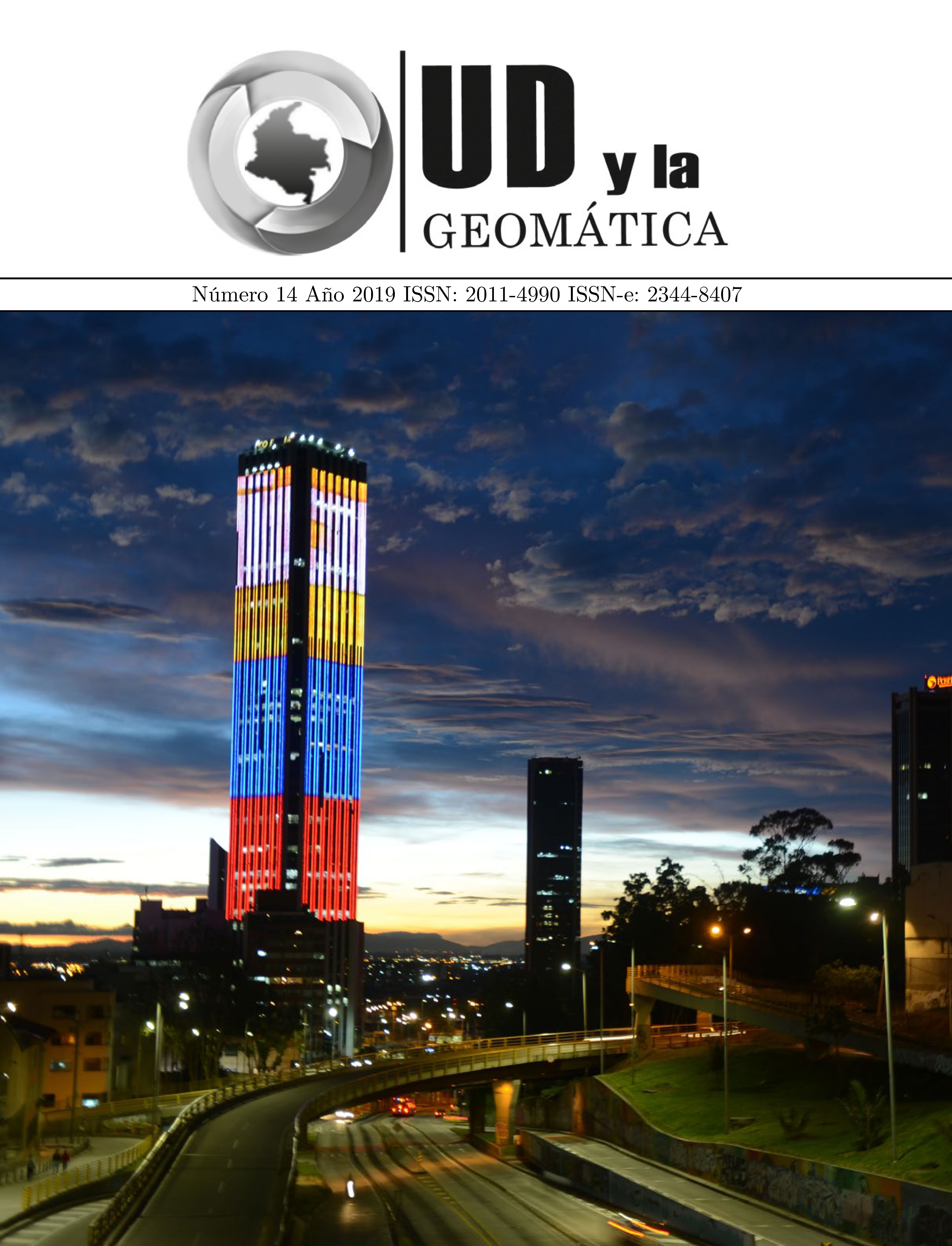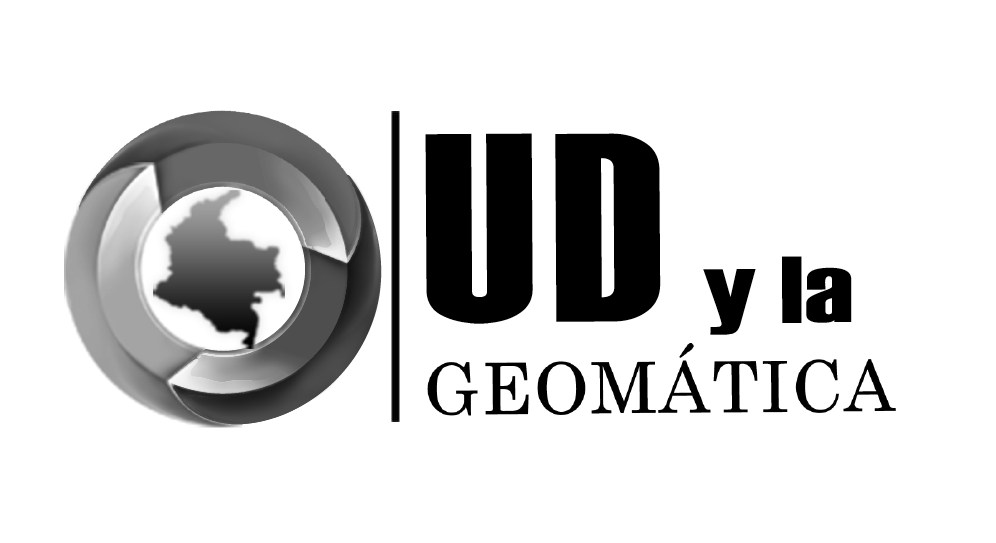DOI:
https://doi.org/10.14483/23448407.15249Publicado:
2019-12-06Edição:
n. 14 (2019)Seção:
Artículo de investigación científica y tecnológicaCaracterización estructural de afloramientos rocosos mediante herramientas de percepción remota
Palavras-chave:
Photogrametry, structural geology, virtual outcrop, VOM, DOM, UAV (en).Palavras-chave:
fotogrametría, geología estructural, aflora-miento virtual VOM, DOM, VANT. (es).Downloads
Resumo (es)
Se elaboró un modelo digital tridimensional (3D) de un afloramiento de rocas sedimentarias del Grupo Guadalupe en la Cordillera Oriental de Colombia, mediante la captura de imágenes aéreas utilizando un vehículo aéreo no tripulado (VANT), con el fin de realizar su caracterización estructural. Para esto, se usó un software especializado para el modelado e interpretación de información tridimensional. Se obtuvieron 62 datos estructurales, 30 de estos corresponden a estratificación, y 32 a familias de fracturas. Se encontró que la secuencia sedimentaria buza uniformemente hacia el occidente (253/59, dirección de buzamiento/buzamiento), y presenta tres familias de fracturas principales: familia 1 (335/84), familia 2 (153/63) y familia 3 (92/51). Este estudio demuestra la utilidad de aplicación de técnicas de percepción remota al campo de las geociencias.
Resumo (en)
A three-dimensional (3D) digital model of an outcrop of sedimentary rocks of the Guadalupe Group in the Eastern Cordillera of Colombia was elaborated, by capturing images of an unmanned aerial vehicle (UAV), in order to carry out its structural characterization. For this, specialized software was used for modelling and interpretation of three-dimensional information. 62 structural data were obtained, 30 of these corresponding to stratification, and 32 to sets of fractures. It was found that the sedimentary sequence dip uniformly towards the west (253/59, direction of dip / dip), and presents three sets of major fractures: set 1 (335/84), set 2 (153/63) and set 3 (92/51). This study demonstrates the usefulness of remote sensing techniques in the field of geosciences.
Referências
Buckley, S. J., Enge, H. D., Carlsson, C., & Howell, J. A. (2010). Terrestrial laser scanning for use in virtual outcrop geology. Photogrammetric Record, 25(131), 225–239. doi.org/10.1111/j.1477-9730.2010.00585.x
Buckley, S. J., Howel, J. A., Enge, H. D., & Kurz, T. H. (2008). Terrestrial laser scanning in geology: data acquisition, processing and accuracy considerations. Journal of the Geological Society, 165(3), 625–638. doi.org/10.1144/0016-76492007-100
Cawood, A., & Bond, C. (2018). eRocK: an oline, open-access repostory of virtual outcrops and geological samples in 3D. Geophysical Research Abstracts, 20. Recuperado de www.e-rock.org
Corradetti, A. (2016). 3D structural characterization of outcrops by means of close-range multi-view stereo-photogrammetry (University of Naples Federico II). Recuperado de http://www.fedoa.unina.it/10683/1/Corradetti_Amerigo_28.pdf
Favalli, M., Fornaciai, A., Isola, I., Tarquini, S., & Nannipieri, L. (2012). Multiview 3D reconstruction in geosciences. Computers and Geosciences, 44, 168–176. doi.org/10.1016/j.cageo.2011.09.012
García-Sellés, D., Falivene, O., Arbués, P., Gratacos, O., Tavani, S., & Muñoz, J. A. (2011). Supervised identification and reconstruction of near-planar geological surfaces from terrestrial laser scanning. Computers and Geosciences, 37(10), 1584–1594. doi.org/10.1016/j.cageo.2011.03.007
Groshong, R. H. (2006). 3-D Structural Geology : a Practical Guide to Surface and Subsurface Map Interpretation (Second edi). doi.org/10.1007/978-3-540-31055-6
Haneberg, W. C. (2008). Using close range terrestrial digital photogrammetry for 3-D rock slope modeling and discontinuity mapping in the United States. Bulletin of Engineering Geology and the Environment, 67(4), 457–469. doi.org/10.1007/s10064-008-0157-y
Haneberg, W. C., Norrish, N. I., & Findley, D. P. (2006). Digital Outcrop Characterization for 3-D Structural Mapping and Rock Slope Design Along Interstate 90 Near Snoqualmie Pass, Washington. Proceedings 57th Annual Highway Geology Symposium, 1–14. Recuperado de http://www.wnrockeng.com/files/Digital Outcrop Characterizati.pdf
Hodgetts, D. (n.d.). VRGeoscience (Computer software). Recuperado de http://www.vrgeoscience.com/
Hodgetts, D., Gawthorpe, R. L., Wilson, P., & Rarity, F. (2007). Integrating Digital and Traditional Field Techniques Using Virtual Reality Geological Studio (VRGS). 69th EAGE Conference and Exhibition Incorporating SPE EUROPEC 2007. doi.org/10.3997/2214-4609.201401718
Hodgetts, D. (2011). Quantitative geology from digital outcrop data for the characterisation of hydrocarbon reservoirs. Geophysical Research Abstracts, 13, 4065–4065. Recuperado de http://meetingorganizer.copernicus.org/EGU2011/EGU2011-4065.pdf
Ingeominas. (2008). Geología de la Plancha 228 Sanfatfé de Bogotá Noreste. Escala 1:100.000.
Jones, R. R., Pringle, J. K., McCaffrey, K. J. W., Inber, J., Wightman, R. H., Guo, J., & Long, J. J. (2011). Extending Digital Outcrop Geology into the Subsurface. In A. J. Martinsen, Ole J. Pulham & M. D. Haughton, Peter D.W. Sullivan (Eds.), Outcrops Revitalized: Tools, Techniques and Applications (Vol. 10, pp. 31–50). doi.org/10.2110/sepmcsp.10.031
Jones, R. R., Wawrzyniec, T. F., Holliman, N. S., McCaffrey, K. J. W., Imber, J., & Holdsworth, R. E. (2008). Describing the dimensionality of geospatial data in the earth sciences—Recommendations for nomenclature. Geosphere, 4(2), 354. doi.org/10.1130/ges00158.1
Kurz, T. H., Dewit, J., Buckley, S. J., Thurmond, J. B., Hunt, D. W., & Swennen, R. (2012). Hyperspectral image analysis of different carbonate lithologies (limestone, karst and hydrothermal dolomites): The Pozalagua Quarry case study (Cantabria, North-west Spain). Sedimentology, 59(2), 623–645. doi.org/10.1111/j.1365-3091.2011.01269.x
McCaffrey, K. J. W., Jones, R. R., Holdsworth, R. E., Wilson, R. W., Clegg, P., Imber, J., … Trinks, I. (2005). Unlocking the spatial dimension: digital technologies and the future of geoscience fieldwork. Journal of the Geological Society, 162(6), 927–938. doi.org/10.1144/0016-764905-017
Menichetti, M., Piacentini, D., De Donatis, M., & Tirincanti, E. (2016). Virtual Outcrop And 3D Structural Analysis Of Monte Vettore Extensional Active Faults. Conference: 35° Convegno Gruppo Nazionale Di Geofisica Della Terra Solida, 64–67. Recuperado de http://www3.ogs.trieste.it/gngts/files/2016/SSp/Riassunti/Menichetti.pdf
Minisini, D., Wang, M., Bergman, S. C., & Aiken, C. (2014). Geological data extraction from lidar 3-D photorealistic models: A case study in an organic-rich mudstone, Eagle Ford Formation, Texas. Geosphere, 10(3), 610–626. doi.org/10.1130/GES00937.1
Pringle, J. K., Clark, J. D., Westerman, A. R., Stanbrook, D. A., Gardiner, A. R., & Morgan, B. E. F. (2001). Virtual outcrops: 3-D reservoir analogues. Journal of the Virtual Explorer, 4(9). doi.org/10.3809/jvirtex.2001.00036
Ragan, D. (2009). Structural Geology: An Introduction to Geometrical Techniques (Fourth edi). Cambridge University Press.
Tavani, S., Granado, P., Corradetti, A., Girundo, M., Iannace, A., Arbués, P., … Mazzoli, S. (2014). Building a virtual outcrop, extracting geological information from it, and sharing the results in Google Earth via OpenPlot and Photoscan: An example from the Khaviz Anticline (Iran). Computers and Geosciences, 63, 44–53. doi.org/10.1016/j.cageo.2013.10.013
Woodcock, N. H. (1976). The Accuracy of Structural Field Measurements. The Journal of Geology, 84(3), 350–355. doi.org/10.1086/628200
Xu, X., Aiken, C. L. V., Bhattacharya, J. P., Corbeanu, R. M., Nielsen, K. C., McMechan, G. A., & Abdelsalam, M. G. (2000). Creating virtual 3-D outcrop. The Leading Edge, 19(2), 197–202. doi.org/10.1190/1.1438576
Xu, X., Aiken, C. L. V., & Nielsen, K. C. (1999). Real time and the virtual outcrop improve geological field mapping. Eos, Transactions American Geophysical Union, 80(29), 317,322-324. doi.org/10.1029/99EO00232
Como Citar
APA
ACM
ACS
ABNT
Chicago
Harvard
IEEE
MLA
Turabian
Vancouver
Baixar Citação
Licença
La revista UD y la Geomática se encuentra bajo una licencia Creative Commons - 2.5 Colombia License.
Atribución - No Comercial - Sin Derivadas





